Is joint pain a concern when thinking about whether you will be able to do the activities you love to do?
There are many ways to avoid joint pain and the good news is that with proper exercise strategies there can often be lasting positive results. Learning about joint structures and how they work can be an important step in taking better care of your body. In this article I will discuss joints and some ideas on how to train them so that you can live the life you love with minimal joint pain.
To start working around any existing physical issues lets first consider the structure of a joint and how the body works.
Most of the major joints contain a lubricating agent known as synovial fluid. There is a capsule surrounding this fluid in each joint that creates a natural cushion between each adjacent bone. In turn each bone is covered with a layer of cartilage which over time can deteriorate due to friction. Cartilage is a vital part of each joint because it helps to absorb shock and distribute force throughout the entire joint. The more we can protect and strengthen cartilage the better.
Training for Healthier Joints:
Warm up Considerations
First of all it is important to prepare joints for exercise with a minimal impact warm-up. A ten to fifteen minute warm-up helps to heat up synovial fluid. This process is necessary in order to provide additional cushioning for major weight bearing joints. Some examples of low impact warm-ups would be swimming, biking or rowing.
Additionally, as the joint is warmed up the cartilage acts as a sponge to absorb the synovial fluid when decompression of the joint occurs. It then pushes the fluid out again when the joint is under compression. This exchange of fluid in and out of the cartilage helps to maintain a healthy joint since it brings nutrients in and carries waste byproducts out.
Joint Distractions
Even with a warm-up sometimes there is still joint pain or a friction-heavy sensation. Over time compression on joints can push the lubricating agent, synovial fluid, out of the center of a given joint such as the hip or shoulder. In this case there is another method that may help reduce friction for problematic joints called joint distraction.
The idea behind a joint distraction is to open space between two adjacent bones to allow for ample room in the joint capsule. Once the compression of the joint capsule is eliminated the synovial fluid may soak back into proper position and provide the lubricating effect once again. When performing joint distractions a resistance band loop may be anchored to a solid post so that you may pull away from it in order to open the joint. Some major joints that may especially benefit from this concept include the ankles, hips, spinal column, shoulders and wrists.
Joint distractions can be beneficial both prior to exercise and also after exercise. Prior to exercise the muscles should not be desensitized extensively so a shorter time of thirty seconds or less is ideal. Once a joint feels correctly lubricated and positioned the exercise session will be more enjoyable and beneficial. After an exercise session it is acceptable to hold distractions for much longer, and up to five minutes is acceptable if desired.
Isometric Exercise
When training joints that are experiencing discomfort even after preparing the joints with a warm-up and distraction it is a good idea to minimize friction throughout each exercise session. With less joint movement there will be less friction. This raises the question “How do I exercise without joint movement?” In order to work around sensitive joints there is a contract and hold, or isometric method that allows muscle strengthening with minimal friction.
When performing isometric exercise it is beneficial to load the target joints and muscles around 80% or more of a perceived one rep maximum (see blood pressure note below*). In order to gain strength throughout the entire range of a given joint it is important to hold a weight for at least a few seconds in three or more separate positions, ideally accruing thirty seconds of work time on each side of the body. Start at the top end of the range of motion and progress towards the bottom section of a joint’s range of motion to gain the best results.
Typically controlling the weight against gravity enacts more muscle fibers and nerve endings. This results in a slight delayed soreness increase but better strength gains. Once muscles are stronger around a given joint they can provide better support and help to reduce friction and/or joint soreness.
*(It is important to note that this type and intensity of exercise can increase blood pressure significantly for a short period of time, if you have blood pressure issues consult your physician before performing them.)
In Conclusion
Sore joints do not necessarily signal that your exercise days are coming to an end. There are ways to work around sore joints and improve joint health. Strength training may provide further joint relief in addition to including a low impact warm-up and joint distractions before and after each exercise session. Hopefully with smart application of these techniques to promote joint health and repair you will continue to be able to live the life you love!

Kai Giese
Kai has an Exercise Science degree through Winona State University and has attained a NETA Certification in personal training. He likes to kayak, hike, ride bike and fish during warm weather. During the cold months Kai likes to snowboard, play hockey and spend time with friends and family.
Contact Kai Giese



